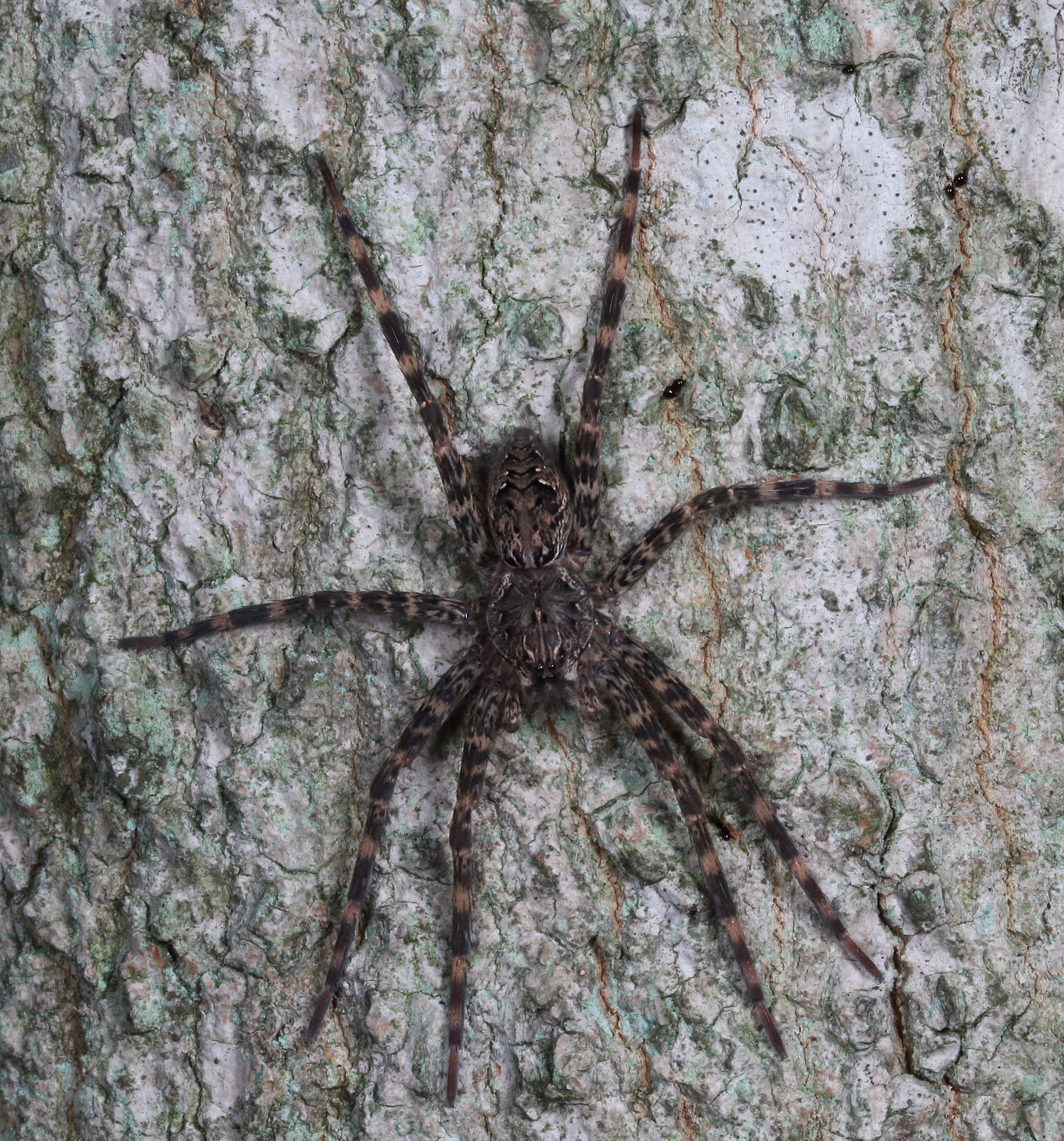This and that, but also earwigs
May 7, 2022 09:29:25 #
First up are European earwigs, Forficula Auricularia, which become exceedingly common in the yard during late summer. No, they don’t crawl into peoples ears, and those pincers in the rear can’t pinch with any force. At least not in this species. I did some perusal about earwigs and learned that the term “earwig” is supposed to be about their remarkable hind wings that are covered by the semi-hard front wings. The hind wings are artfully folded away, and when they are unfolded, they resemble the human ear. Here are some slow-motion clips of the remarkable hind wings of earwigs: https://www.youtube.com/watch?v=MH2qqt-SNy8 I have never seen one unfold their wings, let alone fly.
What about those large rear pincers? They are highly modified cerci appendages that many insects have. In earwigs, the cerci are used in defense (where it seems more of a bluff), but also males use them in mating, and they can also use them to hold prey. Earwigs are omnivores, and are not above taking small soil arthropods.
Anyway, the first picture is of two males. I put the wiggly things together onto a foam rubber plug to contain them, and the huddled nicely together. The pincers come in different sizes in males, and I don’t know why.
 European earwigs by Mark Sturtevant, on Flickr
European earwigs by Mark Sturtevant, on Flickr
The next picture is a female. Their pincers are always small.
Earwigs have a lovely matte texture, so its pretty easy to get pleasingly soft highlights with a diffused flash.
 European earwig by Mark Sturtevant, on Flickr
European earwig by Mark Sturtevant, on Flickr
Next up are two ichneumon wasps. These grow up as parasites on other arthropods, generally on insects or spiders. The first one is Megarhyssa macrurus. She turned up in the yard one day and was unable to fly for some reason. The super long ovipositer hanging off the rear is used to drill into dead wood to lay eggs in sawfly larvae.
 Ichneumon wasp. by Mark Sturtevant, on Flickr
Ichneumon wasp. by Mark Sturtevant, on Flickr
The other ichneumon was a bit of a thrill for me since it is such a stunning insect with those metallic blue wings. This large ichneumon is in the genus Trogus, and there are a couple similar species. I only occasionally see them, but they are always super alert and fly away when I even look at them. But this one was concentrating on rapidly scouring a particular area. It would not let me get into macro lens range, but I could stand back and use the long lens on it for this heavily cropped picture. Ichneumons of this group parasitize swallowtail caterpillars.
 Big ichneumon wasp by Mark Sturtevant, on Flickr
Big ichneumon wasp by Mark Sturtevant, on Flickr
The caterpillar here is unknown to me. It is possibly not an inchworm, despite its appearance, as there are at least two other families with cats that have that ‘look’. I should send this one off to BugGuide.
 Caterpillar by Mark Sturtevant, on Flickr
Caterpillar by Mark Sturtevant, on Flickr
The moth in the next picture is a big underwing moth that landed right in front of me while I was crossing a bridge. Many species are hard to tell apart, but this one sure does look like the darling underwing, Catocala cara. If so, its hind wings are brilliantly marked in a deep red-orange.
 Underwing moth by Mark Sturtevant, on Flickr
Underwing moth by Mark Sturtevant, on Flickr
The spider shown next is no doubt the nursery web aka fishing spider, Dolomedes tenebrosus. I spotted her from quite a way off because these things are big. Members of this group are called nursery web spiders because females guard their young in a nursery at the top of plant, often near water. Fishing spiders stay near water and will even hunt for prey on it.
 Nursery web spider by Mark Sturtevant, on Flickr
Nursery web spider by Mark Sturtevant, on Flickr
Last up is a scene taken with the Opteka wide angle macro lens. I always carry that lens around when out with the cameras in case a scene like this turns up. The picture is a combination of two pictures taken at different shutter speeds and then blended together thru layer masks. One was to illuminate the foreground with a flash and the other was a longer exposure for the background.
 Mushroom wide angle macro by Mark Sturtevant, on Flickr
Mushroom wide angle macro by Mark Sturtevant, on Flickr
Thank you for looking!
What about those large rear pincers? They are highly modified cerci appendages that many insects have. In earwigs, the cerci are used in defense (where it seems more of a bluff), but also males use them in mating, and they can also use them to hold prey. Earwigs are omnivores, and are not above taking small soil arthropods.
Anyway, the first picture is of two males. I put the wiggly things together onto a foam rubber plug to contain them, and the huddled nicely together. The pincers come in different sizes in males, and I don’t know why.
 European earwigs by Mark Sturtevant, on Flickr
European earwigs by Mark Sturtevant, on FlickrThe next picture is a female. Their pincers are always small.
Earwigs have a lovely matte texture, so its pretty easy to get pleasingly soft highlights with a diffused flash.
 European earwig by Mark Sturtevant, on Flickr
European earwig by Mark Sturtevant, on FlickrNext up are two ichneumon wasps. These grow up as parasites on other arthropods, generally on insects or spiders. The first one is Megarhyssa macrurus. She turned up in the yard one day and was unable to fly for some reason. The super long ovipositer hanging off the rear is used to drill into dead wood to lay eggs in sawfly larvae.
 Ichneumon wasp. by Mark Sturtevant, on Flickr
Ichneumon wasp. by Mark Sturtevant, on FlickrThe other ichneumon was a bit of a thrill for me since it is such a stunning insect with those metallic blue wings. This large ichneumon is in the genus Trogus, and there are a couple similar species. I only occasionally see them, but they are always super alert and fly away when I even look at them. But this one was concentrating on rapidly scouring a particular area. It would not let me get into macro lens range, but I could stand back and use the long lens on it for this heavily cropped picture. Ichneumons of this group parasitize swallowtail caterpillars.
 Big ichneumon wasp by Mark Sturtevant, on Flickr
Big ichneumon wasp by Mark Sturtevant, on FlickrThe caterpillar here is unknown to me. It is possibly not an inchworm, despite its appearance, as there are at least two other families with cats that have that ‘look’. I should send this one off to BugGuide.
 Caterpillar by Mark Sturtevant, on Flickr
Caterpillar by Mark Sturtevant, on Flickr The moth in the next picture is a big underwing moth that landed right in front of me while I was crossing a bridge. Many species are hard to tell apart, but this one sure does look like the darling underwing, Catocala cara. If so, its hind wings are brilliantly marked in a deep red-orange.
 Underwing moth by Mark Sturtevant, on Flickr
Underwing moth by Mark Sturtevant, on FlickrThe spider shown next is no doubt the nursery web aka fishing spider, Dolomedes tenebrosus. I spotted her from quite a way off because these things are big. Members of this group are called nursery web spiders because females guard their young in a nursery at the top of plant, often near water. Fishing spiders stay near water and will even hunt for prey on it.
 Nursery web spider by Mark Sturtevant, on Flickr
Nursery web spider by Mark Sturtevant, on FlickrLast up is a scene taken with the Opteka wide angle macro lens. I always carry that lens around when out with the cameras in case a scene like this turns up. The picture is a combination of two pictures taken at different shutter speeds and then blended together thru layer masks. One was to illuminate the foreground with a flash and the other was a longer exposure for the background.
 Mushroom wide angle macro by Mark Sturtevant, on Flickr
Mushroom wide angle macro by Mark Sturtevant, on FlickrThank you for looking!
May 7, 2022 09:43:30 #
May 7, 2022 10:00:49 #
Mark Sturtevant wrote:
First up are European earwigs, I Forficula Auricu... (show quote)
Great photos and article. The earwigs have been out in force here for a month now. I did not know they could fly, as I've never seen on do so. Thanks for posting.


May 7, 2022 10:03:41 #
May 8, 2022 07:29:38 #
Mark Sturtevant wrote:
First up are European earwigs, I Forficula Auricu... (show quote)
Thanks for sharing!

May 8, 2022 08:00:02 #
May 8, 2022 08:13:38 #
May 8, 2022 09:21:50 #
May 8, 2022 10:04:13 #
May 8, 2022 10:33:40 #
Another post from you with very well made images and write ups to match. Thanks.
May 8, 2022 13:17:25 #
May 8, 2022 14:27:22 #
May 8, 2022 17:50:37 #
Mark Sturtevant wrote:
First up are European earwigs, Forficula Auricularia, which become exceedingly common in the yard during late summer. No, they don’t crawl into peoples ears, and ...
Thank you for looking!
Thank you for looking!
I always wondered why they were called earwigs. Love them! I love the photos, not the earwigs. They're wonderful!
caryl
May 8, 2022 17:53:20 #
And as I watched that video I was amazed! I never knew earwigs could fly!
caryl
caryl
May 8, 2022 22:09:59 #
If you want to reply, then register here. Registration is free and your account is created instantly, so you can post right away.










